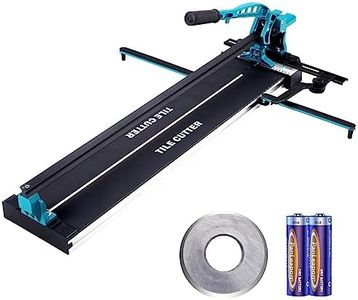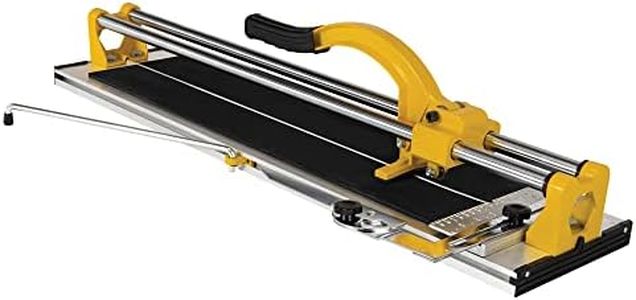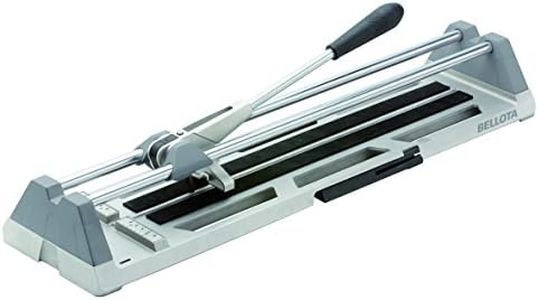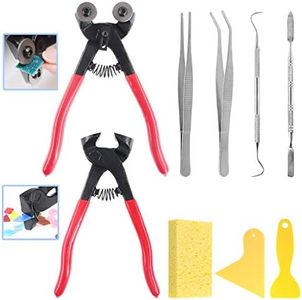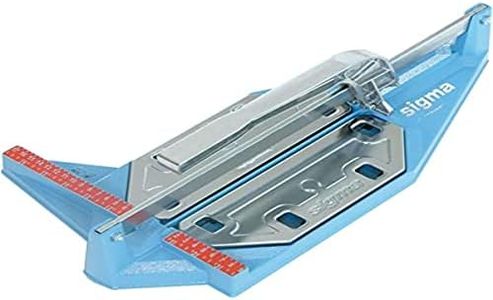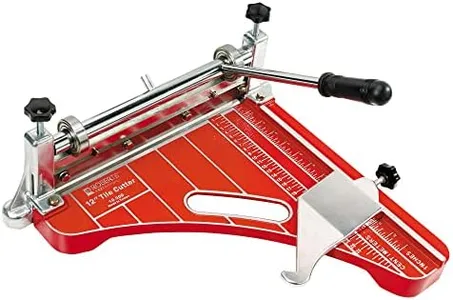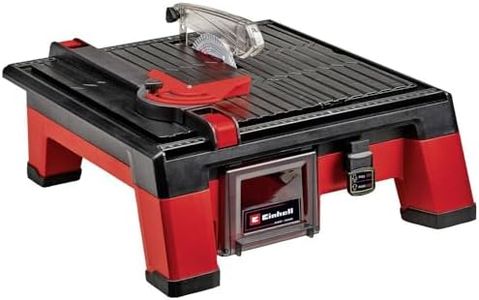We Use CookiesWe use cookies to enhance the security, performance,
functionality and for analytical and promotional activities. By continuing to browse this site you
are agreeing to our privacy policy
10 Best Tile Cutters
From leading brands and best sellers available on the web.Buying Guide for the Best Tile Cutters
Choosing the right tile cutter can make your tiling project much easier and lead to a cleaner, neater finish. The main goal is to find a cutter that matches both the type of tile you intend to use and the volume of work ahead. It's important to consider the type of tiles (like ceramic, porcelain, glass or stone), the thickness of the tiles, and how frequently you'll be using the tool. By understanding how different specs relate to your needs, you can find a tile cutter that's efficient, user-friendly, and durable for your projects.Type of Tile CutterThere are manual tile cutters and electric (wet) tile cutters. Manual cutters are generally suitable for straightforward, linear cuts on standard ceramic and some porcelain tiles. They're portable and quieter. Electric wet saws, on the other hand, use a motorized blade and water to make precise cuts, especially useful for harder materials or situations that demand angled, curved, or intricate cuts. If you mainly deal with ceramic or simple cuts, a manual cutter may suffice; for larger projects, thicker tiles, or tougher materials, an electric cutter is recommended.
Cutting Capacity (Length and Thickness)The cutting capacity refers to the maximum size and thickness of tile the cutter can handle. It’s important because attempting to cut tiles larger than your tool’s capacity can damage both the tile and the cutter. Manual cutters often range from around 12 inches to over 30 inches in cutting length, and typically handle tiles up to a certain thickness (often around 10-15mm). Wet saws may cope with thicker and longer tiles. To pick the right cutting capacity, check the size of the largest tile you intend to use, and choose a cutter with a slightly higher capacity for flexibility.
Blade Quality and TypeFor electric tile cutters, blade quality impacts cutting smoothness and speed. Wet tile saws use diamond-tipped blades, which efficiently cut through hard materials. For manual tile cutters, the scoring wheel is the key element, often made from tungsten carbide. Better quality materials last longer and cut more cleanly. Consider the tiles you'll be using; for harder tiles or frequent use, opt for a cutter with high-grade blades or wheels. For general, occasional use on standard tiles, most mid-range options are sufficient.
Ease of Use and Precision FeaturesFeatures like measurement guides, adjustable angles, stable bases, and ergonomic handles help achieve precise cuts and reduce strain or mistakes. Some cutters allow for quick adjustment to different angles or include laser guides for more accuracy. If you’re a beginner or want professional-looking results with less hassle, look for models with clear guides and user-friendly adjustment mechanisms. For experienced users, additional precision features may be less essential but helpful for complex patterns or high volumes.
Portability and Build QualityHow portable and sturdy a tile cutter is will affect both convenience and durability. Manual cutters are generally lighter and easier to transport, making them excellent for different job sites or home projects. Electric cutters are heavier and bulkier, better suited for fixed workshops or larger projects. Build quality, including strong metal construction and reliable components, ensures the tool stays accurate and safe over time. Decide if you need to move your tile cutter frequently, or if it will remain stationary, and choose accordingly.
Maintenance and SafetyTile cutters require some maintenance to stay effective—regular cleaning, blade replacement, and keeping moving parts lubricated. Safety features, like blade guards (on electric cutters) or slip-resistant bases, help protect you during operation. A cutter with accessible maintenance points and sufficient safety measures is important, especially for new users or regular home use. Consider how often you’ll use the cutter and pick one with maintenance needs you can reasonably fulfill.
